Written & Photographed by Kalie Ilana Cassel-Feiss
By the time Sheng Lor was old enough to go to school, she already knew how to embroider. Born into the Hmong culture of Laos, the Oakland Fiber founder grew up within a culture that sees sewing, indigo batik and dying, and the intricacy of embroidery as highly regarded arts. During her youth, all young girls were taught how to embroider at an early age, and it was their custom that every year, each person must make an entire outfit by hand. “We weave really plain cloth and then spend a year embroidering,” Sheng explains. “My four sisters and I would do the embroidery, and our mom was a dressmaker, who would sew them into outfits.”
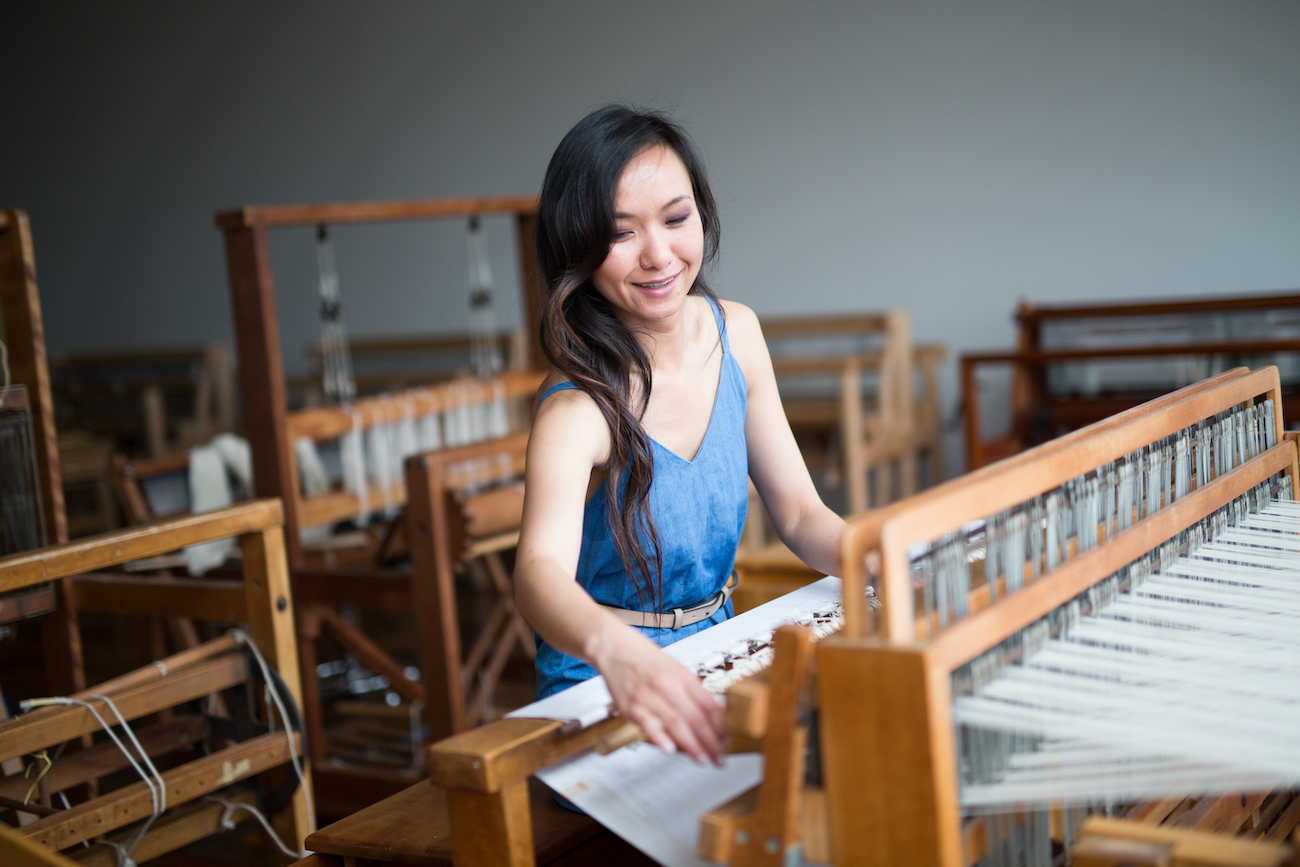
Both Sheng’s mother and grandmother were well-respected and sought-out dressmakers, a crucial trait among the Hmong as they make their clothing without the use of premade patterns. “Everything is made to custom fit,” she says. “And because we don’t have a history of written literature, nobody is passing down a written pattern. Either you know it or you don’t.” Because of this “secret skill” of sewing among Sheng’s family, they received visitors all the time.
“I always considered my cultural experience a blessing, to be constantly surrounded by textiles and handmade cloth,” she says. “A lot of Hmong friends hated being forced to sew, but I never hated it — I loved it. ” Sheng’s love of cloth led her to study printmaking at university. Enchanted with designing fabric, the only problem was that she couldn’t fathom being on a computer for eight hours a day. One of her first jobs after college happened to be at a weaving studio. Sheng had never woven before, but she and her supervisor, Andrea Blackmon, felt an instant connection. Blackmon, who Sheng considers her most important weaving mentor, tells people, “I just showed her the basics. Everything she learned, she did on her own. She, however, taught me a lot about attitude towards the weaving.” Textile making was in her blood, and Sheng quickly was promoted to become the supervisor at Woodmont Weavers. This program provided weaving assistance for adults with special needs, who were then paid for their weaving work. Sheng managed that job for five years, loving every minute of it: “I loved that job very much. I got to weave every day!”
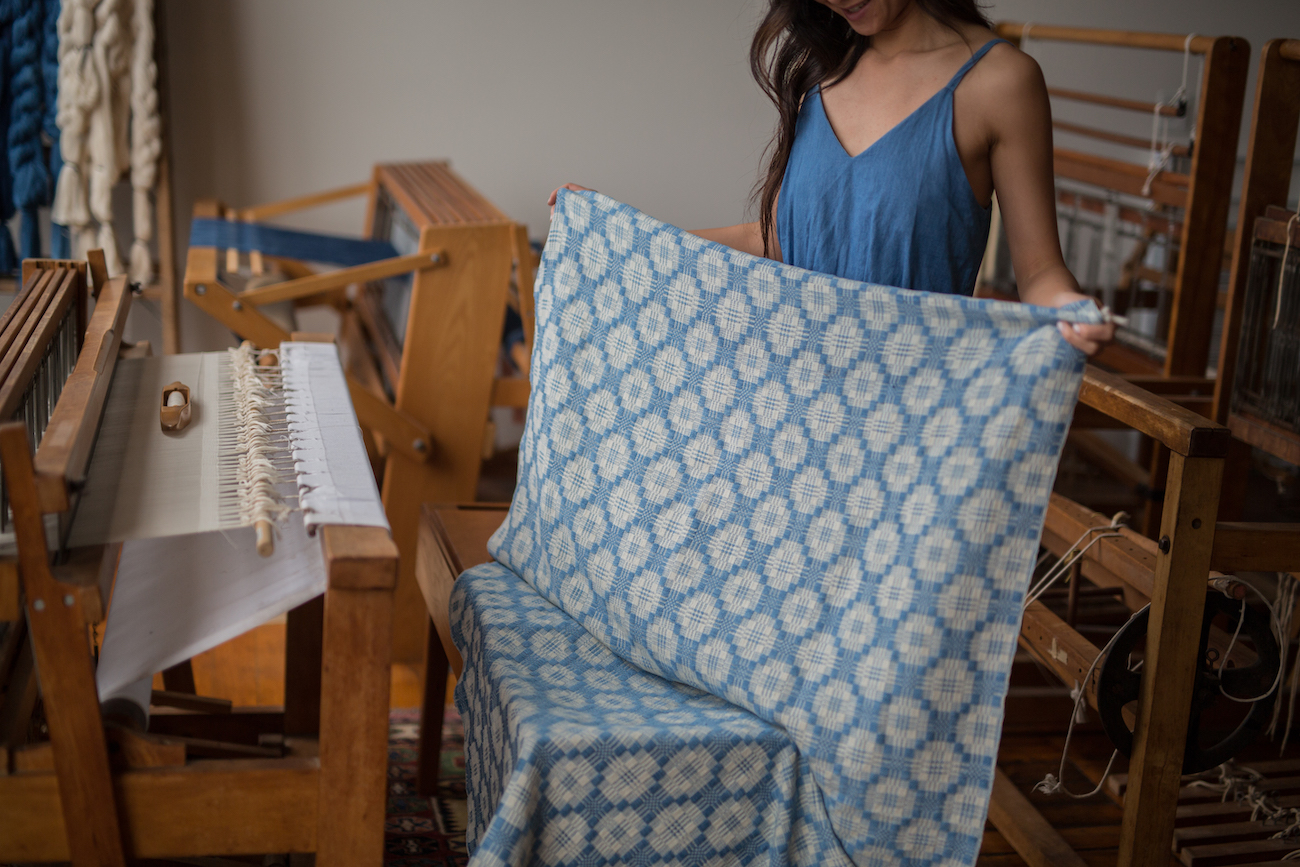
Sheng’s trajectory moved her to San Jose, when a nonprofit asked her to start a weaving program from scratch, similar to Woodmont Weavers. Inspired by federal and state mandates to create more jobs for people with special needs, she attempted to replicate what she learned from the past five years. Sheng ran into roadblocks, however, discovering that the value of handmade cloth did not reflect the labor spent, when the program began to receive cuts. “In my career, weaving has been meaningful: where the people get paid for something beautiful that they’ve created. But when this program changed to recreation/arts and crafts, I couldn’t get behind that.” She grew frustrated and eventually, as the program was unable to sustain itself, it closed.
At that moment, Sheng looked around at all the looms still sitting there. Knowing they would do nothing but collect dust, she desired to rescue them, and create something of her own. She bought many of the looms off her former employer and rented a studio at Cotton Mills, and Oakland Fiber came into being. Sheng moved sixteen large new and vintage looms inside: her collection ranging from Gilmore jack looms, to Glimakra countermarch Swedish looms, to many counterbalance looms. To set up her studio, all her sisters flew out to help her dress her looms. Even though they had never woven before, they all perfectly understood tension and how to handle the yarn.
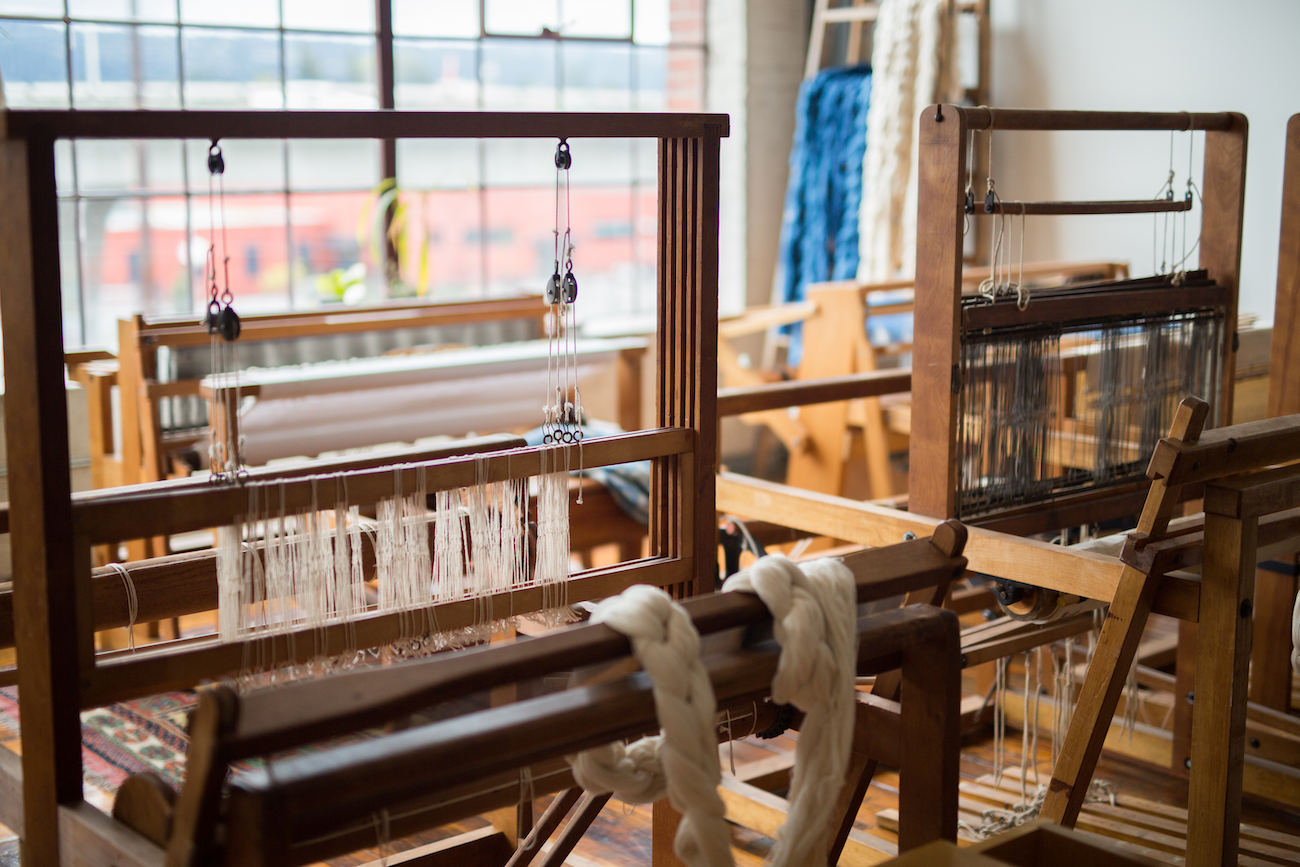
Sheng rented the studio in November, bought the looms in December, set them up in January, and started teaching classes in February. She is currently working on her business plan, and is most passionate about weaving as a form of employment. Growing up with immigrant refugee parents who didn’t speak English, and working with people with special needs has shown her that textiles can be a very empowering form of work for both of those groups. She wishes to pay people a living wage who otherwise have a difficult time finding jobs, such as immigrants and ex-convicts. Her idea is to design handwoven products with interesting patterns that are simple enough for anyone to weave. But her question remains: how to get consumers to pay a fair price for handmade, local products? “I want us to show in our communities that locally made is good; and when the labor is local – that that is worth paying extra for,” she says.

Passionate about the social impacts of textiles, Sheng is also considerate of the ecological impacts, striving for zero waste. “With a weaving background, you start to see material as very precious and you don’t want to throw any away.” Weaving with undyed cotton, Sheng creates beautiful products for the home: hand-towels and napkins, to reduce paper waste. “I have lived for a long time without any paper napkins. It saves me money and keeps my trash very small.” The Hmong style of sewing clothing also exemplifies zero waste, knowing how to create garments in such a way where there is no “extra” fabric. Sheng is working on developing a pattern of the traditional Hmong jacket, a “secret skill” in her culture that combines a set of triangles with a collar. Hmong people also traditionally weave with hemp, and though she loves cotton, she can’t wait to find a hemp supplier.
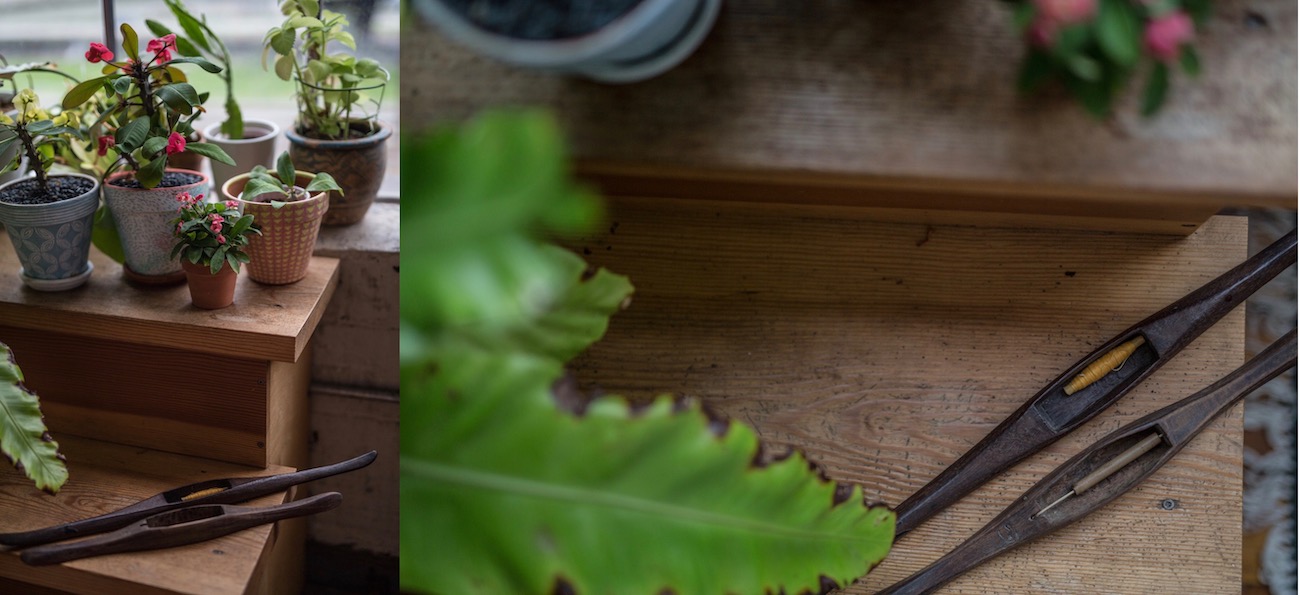
Alongside her business plan and product design, Sheng is most honored to serve as a weaving teacher and mentor. “I am not qualified to do anything else except weave. I don’t have a choice,” she says, laughing. Sheng teaches group classes every weekend, with a few private lessons on the side. “I had no idea this many people were this interested in weaving. I’ve been very happy knowing there’s a tribe.” Now, she feels as if she’s doing the same thing as her family did during her childhood. “It’s my home and I’m doing what I love. I love having visitors over. And I get to talk about textiles every day. It’s what give me comfort.”
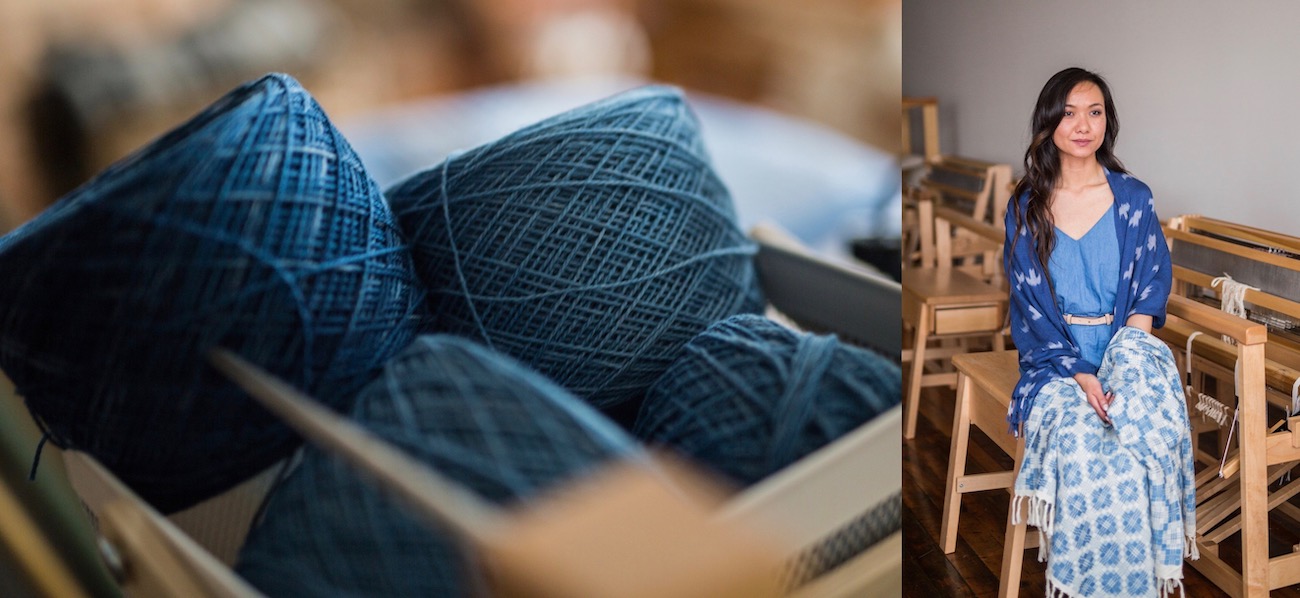
Head over to the Oakland Fiber website to see her collection or enroll in a workshop, and follow along on Instagram @oaklandfiber to stay up to date on product offerings, workshops, and studio news.





